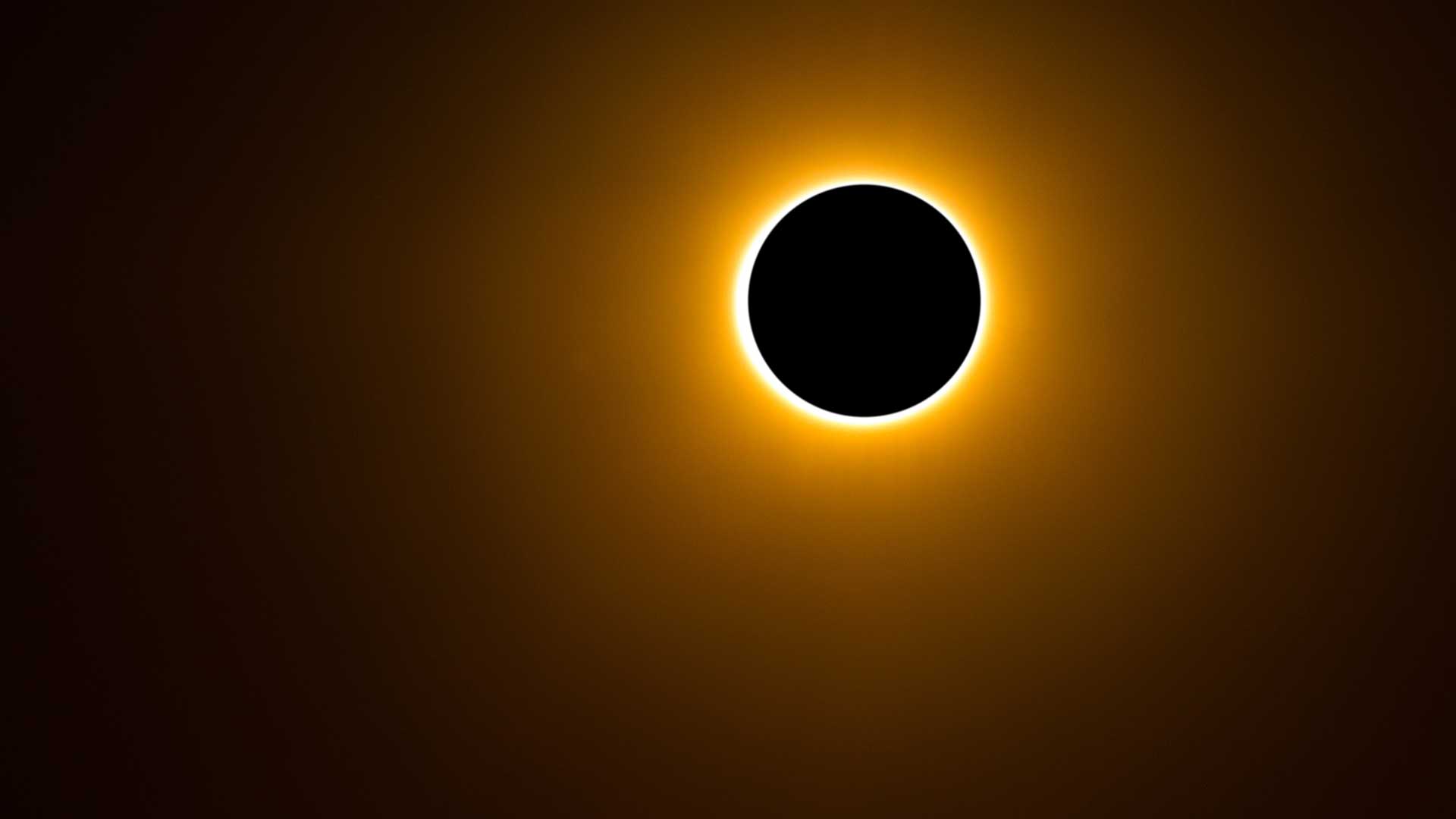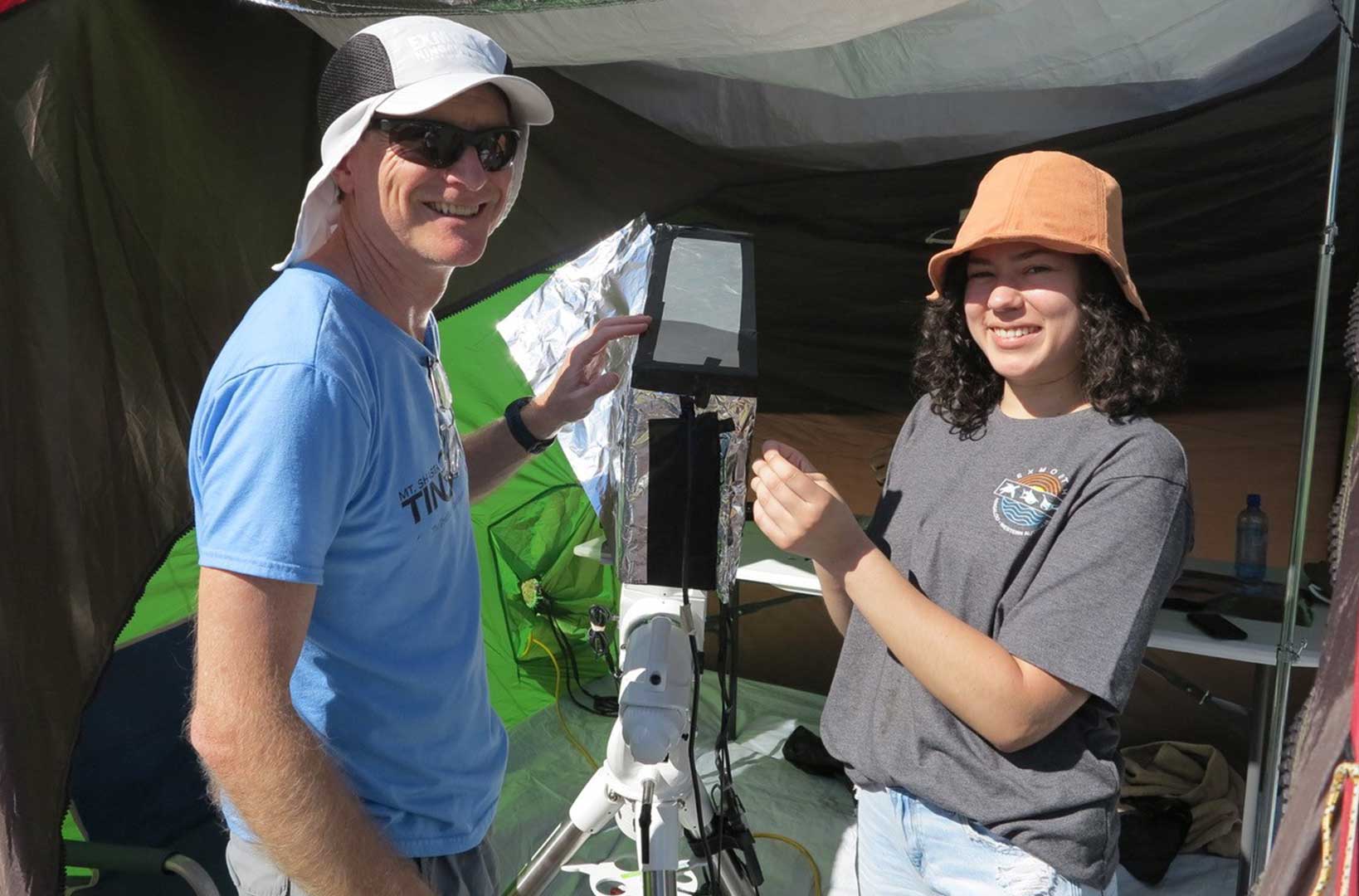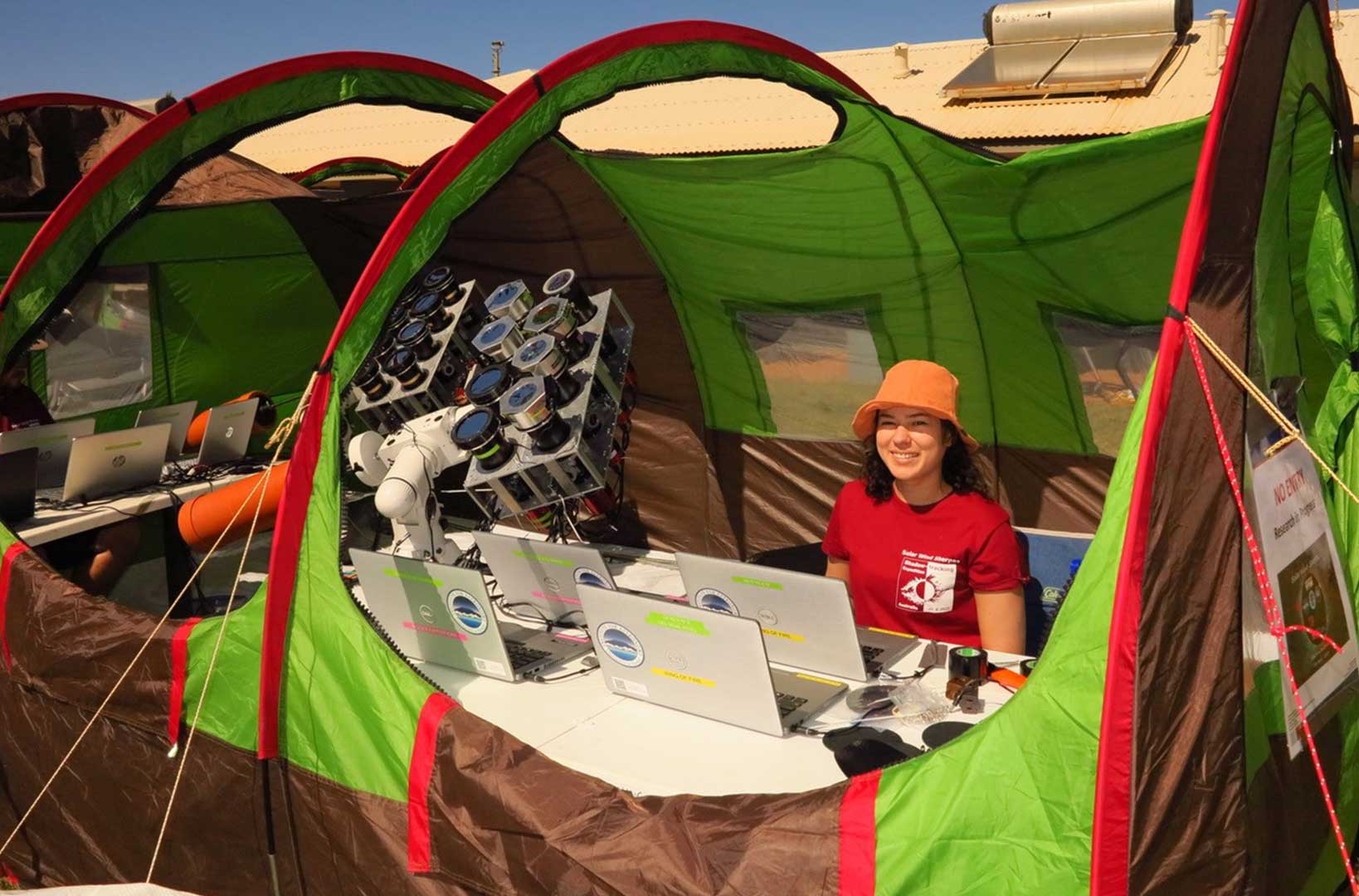How Witnessing a Solar Eclipse Can Help Prevent Global Disaster

Danielle Casillas recently took on the student research project of a lifetime.
Working with Professor Eric Ayars, she traveled almost 50 hours to a remote desert in Western Australia on a NASA-funded trip to the site of a total solar eclipse.
Casillas was part of a team sent to gather data related to the sun’s outer atmosphere, the solar corona—a feature of our star that Ayars calls, “the biggest mystery in the solar system.”
But why so mysterious?
“It’s so much hotter than the surface and we don’t fully understand why,” Ayars said.
Temperature-wise, the solar corona averages around 1.5 million degrees Kelvin—significantly hotter than its surface, which is roughly 5,800 degrees Kelvin.
Aside from the vast temperature difference, the corona also acts as a superhighway for electromagnetic pulses (EMP’s), which are large bursts of energy from the sun associated with coronal mass ejections (CME’s)—which are weirdly as bad as they sound. A CME has the potential to wipe out satellites and electronic communication across the globe for an unspecified amount of time. (Want more detail? See the Carrington Event for an example of this in semi-recent history.)

Because the sun is so bright, the only way to see and gather data on the solar corona is to do so during an eclipse. Total eclipses happen roughly every 18 months, and since the world is over 70% water, the chances of one taking place with visibility on land are even rarer. And this is why a global throng of roughly 30,000 people, ranging from scientists to eclipse-chasing tourists, came together in Western Australia.
“The research group is composed of people from all around the world,” Casillas said. “We worked with people from the Czech Republic, Germany, and Hawaii. It was a lot of fun being able to collaborate with everyone, sharing knowledge with everyone, and making friends along the way.”
For Casillas, now a senior majoring in physics and current president of the student physics club, this trip also presented a high-stakes environment to put all the skills and training she’s acquired to use.
“It’s a lot of planning going into about 50 seconds of data collecting,” she said. “The full three weeks were mostly spent packing, calibrating, checking our gear, all for anticipation of this short window when it all had to come together.”
Using 24 cameras, their team gathered 1.6 terabytes of data on the solar corona.
“It was really stressful,” Casillas said. “Even for a few minutes after the eclipse ended, we were all just waiting to make sure the data was collected. Once we knew it was successful, everyone took a huge breath.”
Despite all of the stress and anticipation that went into preparing for it, she was mindful of the fleeting opportunity to witness a natural phenom of this scale.
“It’s a beautiful moment,” she said. “Not just for looking up at the sky, but for the community to take a moment to get together and collectively stare at the same amazing thing. No one was considering what they were doing in that moment.”

This eclipse was the second that Professor Ayars has chased across the globe—the first one, which took place in Antarctica, was not visible due to cloud cover—and it proved to be worth the time, energy, and work.
“Imagine a midnight blue sky with a black hole in the middle, all of it surrounded by white silvery flames,” Ayars said. “That’s the corona. It’s an absolutely phenomenal experience.”
Casillas, who is now entering her final year of undergraduate studies, found the experience useful in finding her next steps as a future physicist. Being selected for this project and working on a team with Professor Ayars, as well as a team of scientists and eclipse specialists from across the world, was both affirming and eye-opening.
“I’ve always been interested in optics and lasers,” Casillas said. “Going on this trip has definitely pulled me more towards the astronomy side of physics. I’m going to take another astronomy class to further diversify myself and kind of get to know more and see if that’s really the pathway that I want to take.”
With all the data uploaded and its lengthy analysis underway, there is still much work to do. Piecing together the images and information, Ayars hopes to begin creating a temperature map that can help scientists understand the corona’s mysterious heat patterns. “From there, we can potentially figure out how to predict and prepare for a CME and use it to put satellites into safe mode for an important hour or so—and hopefully save them.”
For amateur eclipse chasers, the next annular solar eclipse will take place on Saturday, October 14 at 9:18 a.m. in Oregon. You can visit NASA for more information.


